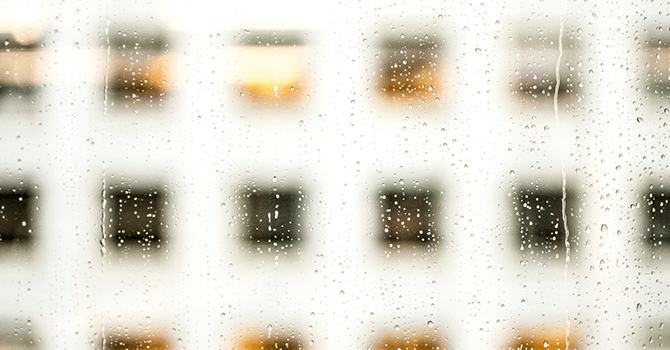In the midst of the swirling COVID-19 crisis, I have found a few moments, when I lift my head from the pressing pastoral realities of congregational life and from my own sense of vulnerability and worry, to think about the longer term.
Fewer and fewer of us now believe that after this crisis, life will just go back to the way it was. It is becoming clearer that life on the “other side” will be indelibly and irrevocably changed.
But what will that life look like? When I give myself permission and space to ask this question, I am realizing four things.
First, before I can imagine a new future, I need to grieve -- and, as a priest, lead others in grieving -- what has been lost. There are some who would urge us to postpone our grief in order to get through the crisis. Yet healthy, restorative grief cannot be delayed.I cannot wait until the crisis is over. My congregation cannot wait until we all gather back together.
We must lament all the things we have lost and are losing now -- travel, weddings, celebrations, holidays and holy days, jobs, businesses, dreams, friends and family members, confidence in our elected leaders -- all of it.
We are missing being together at births and deaths, holding hands and each other. And while we can delay memorial services, there is no postponing grief. Part of my calling is to help people walk through the grief in all its complexity. To do this, I must first give myself room to grieve. I cannot guide others through something that I am not able or willing to experience myself. Now is the time for each of us to feel the guilt, shame, rage, fear, frustration, denial. All of it.
Second, given that the future will be different in ways that are not yet knowable, I need to develop multiple visions of the future, and congregations (and other organizations) need to do the same. Andy Crouch has written provocatively about this time, asking how our response should be different if the COVID-19 crisis turns out to be a “blizzard,” a “winter” or the beginning of a “little ice age.” Lifting my head from the day-to-day, I increasingly realize that congregational and other organizational responses to this moment must include plans for all three possibilities.
While the crisis is looking less like a blizzard -- a quickly passing storm -- what if it in fact is? Those clamoring to “reopen” the country are wagering just that. So what if, in a month or three, we are able to resume congregational and community life much like they were before? What will we have learned in this time that will shape our going forward?
Or what if this is instead a winter -- a protracted season of ongoing crisis -- with oscillations between more- and less-restrictive distancing measures as the rate of new cases and deaths rises and falls? What if this introduces a new kind of unpredictability in our life together until there are better treatments or there is a vaccine, possibly as long as 18 to 24 months from now? How do we plan for distance and then reunion and then distance again -- and at what point does distance become estrangement?
And what if this has the even deeper impact of an ice age -- a new epoch -- remaking our institutions, reforming entire industries, reshaping what we mean by community? What if the much-lamented anticipated closure of 40% of congregations in the United States in the next 30 years happens instead in the next 30 months? What then?
What if a majority of businesses that have been shuttered during this period never reopen despite federal loans? What if this is a time that cleaves history into a before and after in this country and around the world?
Whether storm, season or epoch, this crisis has already forced us to reimagine what we think of as congregational worship, giving and stewardship, staffing structure and mission. We are rethinking community engagement, service and outreach, pastoral care and preaching. The crisis will have us reimagining all of these regularly as we learn and change in response to it. The number of times we will have to learn, unlearn, imagine and reimagine is unknown, but the pattern seems likely to persist.
The most likely future, of course, is that the COVID-19 crisis will be some combination of storm, season and epoch, depending on who we are, where we live, what resources are available to us, and how the virus touches us personally. For this reason, the third thing I am learning is that when this is “over” for one person, or even for segments of society or entire geographies, it will not be over for others.
Even as some people can hardly wait to return to their congregations, others will fear gatherings like church for a long time. A recent Harris Poll asked people when they might feel comfortable again in large gatherings (the closest thing in the poll to going to church). The average answer was two to three months after the curve was flattened.
Even after we are allowed back together in person, we need to anticipate continuing worship online for another eight to 12 weeks, probably longer, perhaps forever, specifically to serve people whose valid concerns and real anxieties keep them away -- those for whom the crisis isn’t over.
Likewise, we need to anticipate that phrases like “flu season” or “shut-in” or “homebound,” perceived as mostly neutral in the past, could now be emotionally triggering. We will have to accommodate those who have lost the innocent belief that gathering in groups of more than five or 10 or sharing a meal together are inherently good and safe things.
We have entered a time of global trauma-response ministry, and we will need to be attentive to the different ways that people move through trauma -- some quickly, some slowly, some not at all.
Fourth, I am realizing that it’s important for us to hold on to the agility and adaptability we have found in recent weeks. This crisis has invited us to a level of necessary innovation and experimentation that many congregations and organizations haven’t known in our lives together for a long time.
Clergy, musicians and church staff members have taken real risks to adapt worship to Zoom or Facebook Live, even adapting services for the holiest days of the church year to online platforms. Pastors and priests have offered virtual visits to church members and visitors.
Lay leaders have hosted virtual coffees and virtual meals to sustain congregational community. Members who had only ever given by check have now given online, by text and through apps. People of faith have sewn masks, gifted food (and food delivery services), delivered virtual palm fronds for Palm Sunday.
The real risk is that we will lose these improvisational muscles. Our next normal will require the creative capacity of every person to figure out how we live, lead and serve in the time that comes after the crisis.
When I lift my head from the day-to-day, I find something waiting for me that feels less like panic and more like hope. The poet Wendell Berry puts it this way:
“No, no, there is no going back. Less and less you are that possibility you were. … Now more than ever you can be generous toward each day that comes. … Every day you have less reason not to give yourself away.”
With all the uncertainty, that feels about right.














